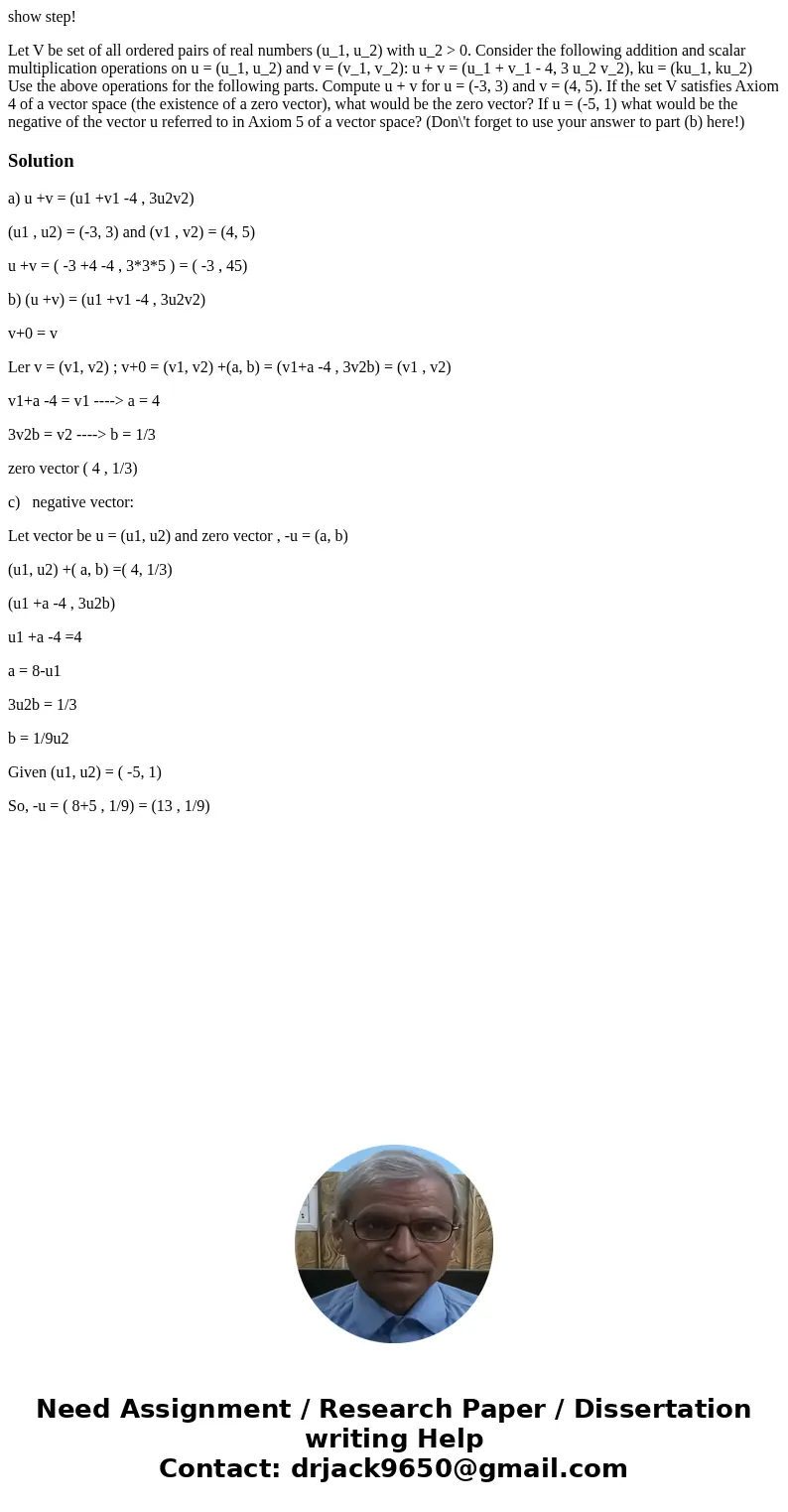show step Let V be set of all ordered pairs of real numbers
show step!
Let V be set of all ordered pairs of real numbers (u_1, u_2) with u_2 > 0. Consider the following addition and scalar multiplication operations on u = (u_1, u_2) and v = (v_1, v_2): u + v = (u_1 + v_1 - 4, 3 u_2 v_2), ku = (ku_1, ku_2) Use the above operations for the following parts. Compute u + v for u = (-3, 3) and v = (4, 5). If the set V satisfies Axiom 4 of a vector space (the existence of a zero vector), what would be the zero vector? If u = (-5, 1) what would be the negative of the vector u referred to in Axiom 5 of a vector space? (Don\'t forget to use your answer to part (b) here!)Solution
a) u +v = (u1 +v1 -4 , 3u2v2)
(u1 , u2) = (-3, 3) and (v1 , v2) = (4, 5)
u +v = ( -3 +4 -4 , 3*3*5 ) = ( -3 , 45)
b) (u +v) = (u1 +v1 -4 , 3u2v2)
v+0 = v
Ler v = (v1, v2) ; v+0 = (v1, v2) +(a, b) = (v1+a -4 , 3v2b) = (v1 , v2)
v1+a -4 = v1 ----> a = 4
3v2b = v2 ----> b = 1/3
zero vector ( 4 , 1/3)
c) negative vector:
Let vector be u = (u1, u2) and zero vector , -u = (a, b)
(u1, u2) +( a, b) =( 4, 1/3)
(u1 +a -4 , 3u2b)
u1 +a -4 =4
a = 8-u1
3u2b = 1/3
b = 1/9u2
Given (u1, u2) = ( -5, 1)
So, -u = ( 8+5 , 1/9) = (13 , 1/9)

 Homework Sourse
Homework Sourse